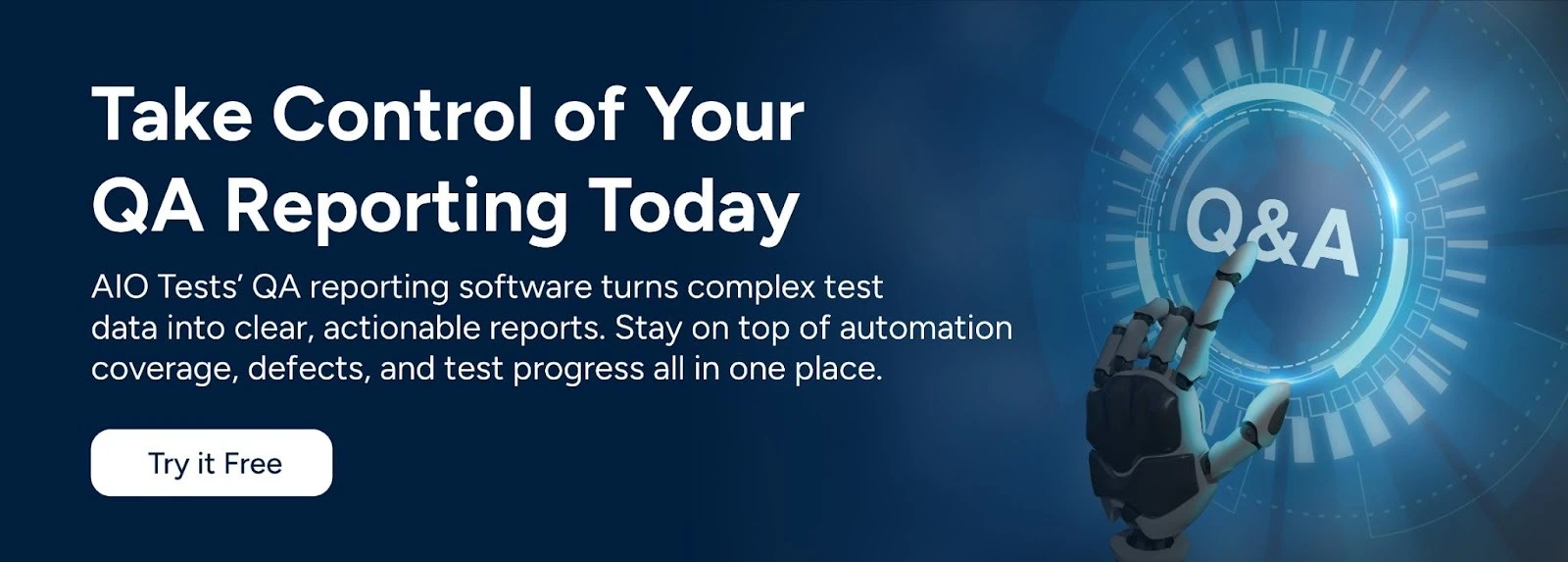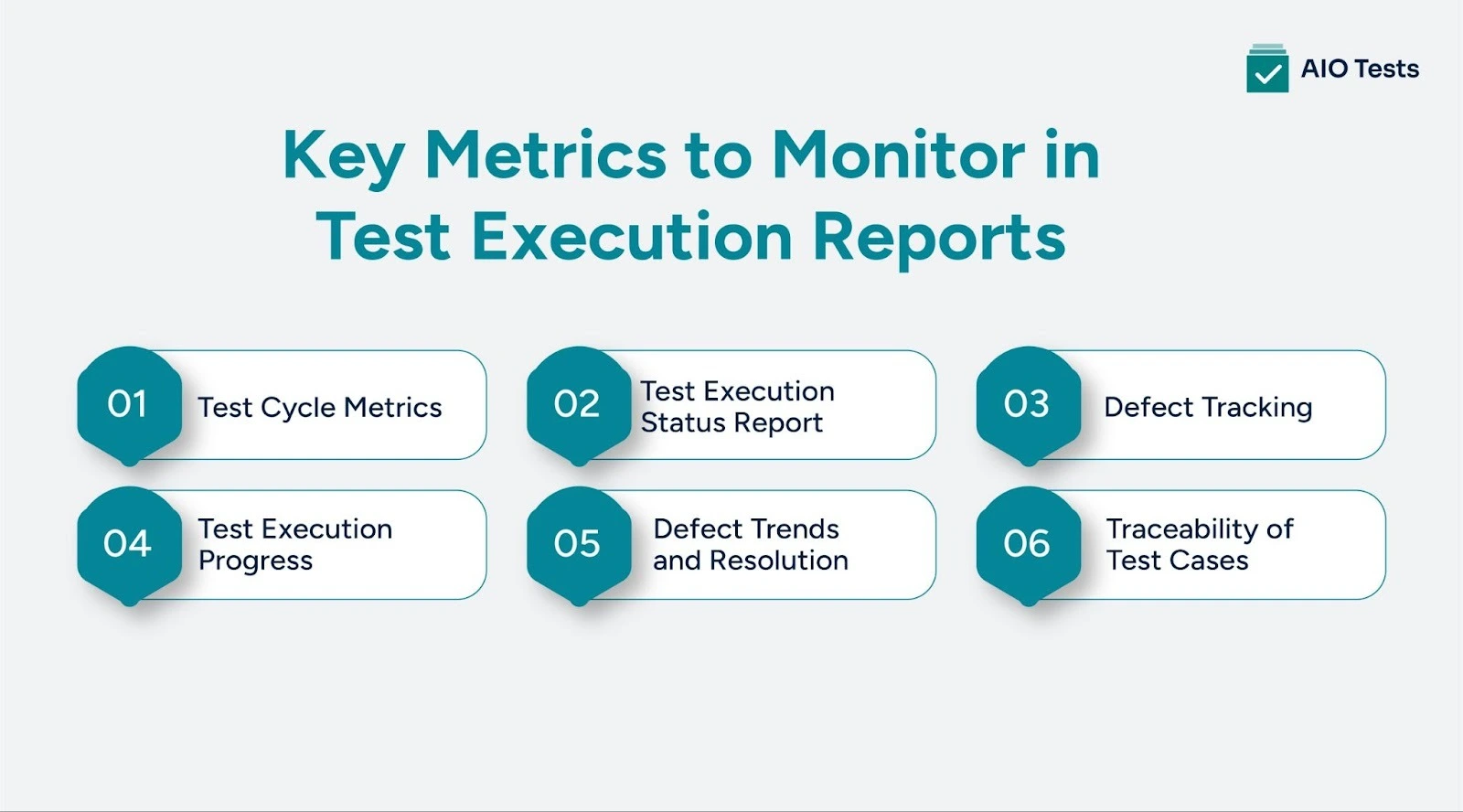
Testing progress is rarely as clear as it should be. Too many QA teams rely on scattered spreadsheets, outdated QA testing tools, or manual updates to understand what’s really happening in a test cycle. Without detailed test execution reports as part of structured software quality assurance, teams are left guessing about defects and coverage gaps.
AIO Tests changes that. It offers structured, real-time test execution reports for both manual and automated testing. From defect tracking to cycle completion rates, these reports help QA leads stay ahead of issues, make data-backed decisions, and keep releases on track.
In this post, we’ll break down the most critical metrics QA teams should be tracking and show how AIO Tests brings clarity to your test execution process.
A test execution report is a detailed snapshot of your testing progress. It tracks what was tested, how it performed, and what issues were found, giving you a clear view of how well your QA efforts are working.
These essential testing reports help teams stay aligned, detect issues early, and manage QA work with more precision.
When managing immediate releases, vague updates like "testing in progress" aren’t helpful. You need specifics.
A Test Execution Summary Report provides a high-level view of different types of software testing, including pass/fail distribution, defect severity patterns, and cycle completion percentages.
This summary helps QA leads, product managers, and developers stay aligned without wading through raw data.
Multi-Cycle Summary Reports take it a step further. By aggregating data across multiple test cycles, you can:
Example: If the same five test cases keep failing across three cycles, you know it’s time to investigate more deeply, including how those teams are writing test cases in the first place.
AIO Tests makes these reports easy to generate, read, and share without any manual effort required.

Most QA teams lack data and clarity, but AIO Tests addresses these issues.
AIO Tests is an AI-powered test management tool built natively for Jira. It centralizes planning, execution, and reporting, so QA teams are not context-switching across tools and can manage end-to-end software quality at scale directly inside Jira.
Here’s how AIO Tests helps with test execution reporting:
Beyond reporting, AIO Tests also supports your entire QA workflow to boost efficiency and collaboration:


To measure the health and speed of your QA process, track:
These metrics show how efficiently tests are running, where bottlenecks exist, and how close you are to release readiness.
This report shows test outcomes in real time.
Defect reports help QA teams:
Tracking progress visually helps with faster decisions.
By analyzing defect trends over time, you can:
AIO Tests offers full traceability from requirements to defects.
Reliable, real-time reporting is essential for high-performing QA teams. AIO Tests delivers the clarity you need to track progress, resolve issues faster, and make confident release decisions. With automated reporting, traceability, and real-time dashboards, your team stays focused, aligned, and ready to ship quality software on time.
Ready to see it in action? Schedule a demo and explore how AIO Tests can simplify your entire QA reporting workflow.

They give QA teams a clear, structured view of progress. Teams can identify test failures, unresolved defects, and blockers early, reducing risk and improving release timelines.
Yes. AIO Tests integrates seamlessly with Jira, letting teams manage test execution, defects, and reporting all in one place. Reports can also be added to Jira dashboards.
You can schedule reports to run automatically at set intervals (daily, weekly, etc.). AIO Tests then sends them to stakeholders, eliminating manual effort and keeping everyone informed.